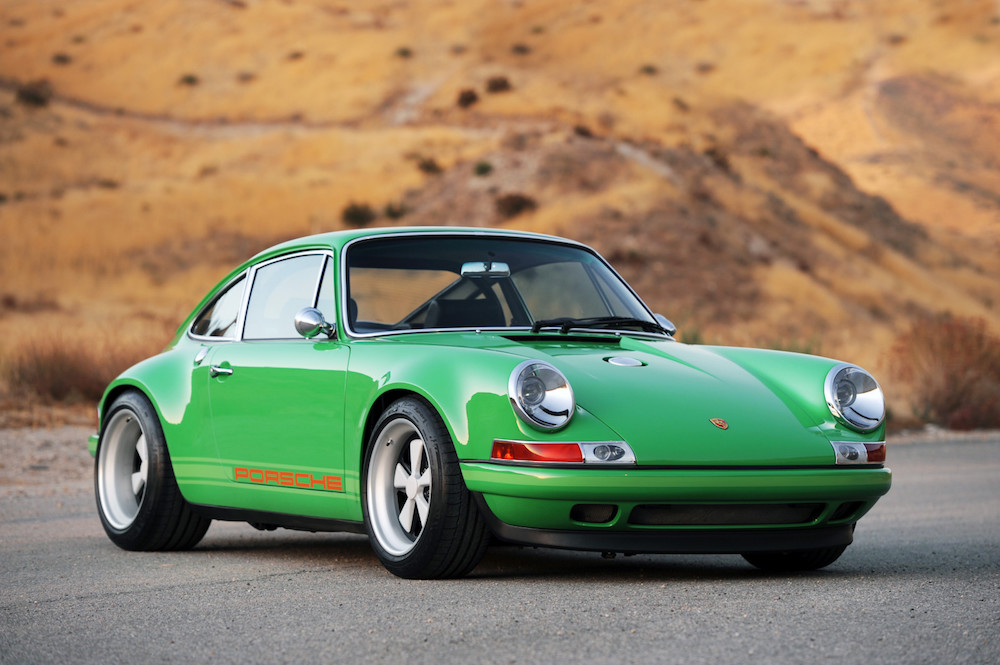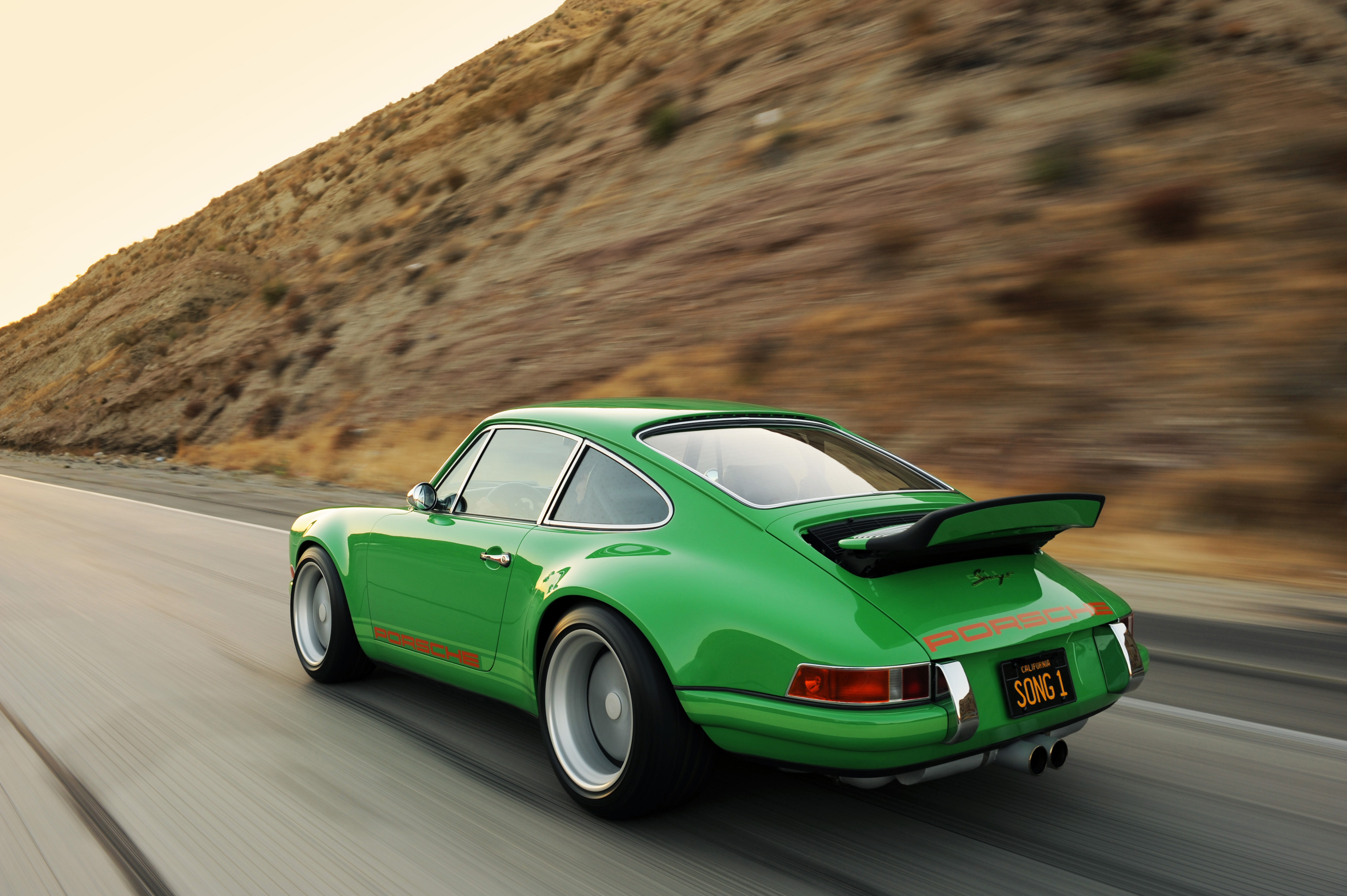The Porsche 911 Turbo 1970, a timeless classic in the world of sports cars, has left an indelible mark on automotive history. In this article, we will explore the journey of this iconic vehicle, from its inception to its enduring legacy. Join us as we dive into the heart of this Porsche masterpiece.

The Birth of an Icon
Early Porsche 911 Models
Before we delve into the 911 Turbo, let’s take a step back to understand the roots of this legendary line. Porsche introduced the 911 in the early 1960s, and it quickly gained a reputation for its rear-engine design and sporty performance.
Development of the Turbo
The idea of a turbocharged 911 was conceived as a means to enhance performance further. Porsche engineers saw the potential of turbocharging technology and embarked on a journey to create something exceptional.
Unveiling the 911 Turbo 1970
In 1970, Porsche unveiled the 911 Turbo, also known as the 911 2.4 Turbo. This marked a significant milestone in the history of the brand, as it introduced a level of performance previously unseen in a production car.

The Powerhouse Under the Hood
Turbocharged Engine Technology
The heart of the 911 Turbo was its innovative turbocharged engine. This groundbreaking technology allowed for a significant increase in power output, setting new standards for sports cars.
Performance Specs of the 1970 Model
The 911 Turbo 1970 was no slouch when it came to performance. With its 2.4-liter flat-six engine, it produced an impressive 260 horsepower, propelling it from 0 to 60 mph in just 5.5 seconds—an astonishing feat for its time.

Design and Aesthetics
Classic Porsche Styling
Porsche has always been synonymous with elegant and timeless design. The 911 Turbo of 1970 was no exception, with its iconic silhouette and sleek lines that continue to influence modern sports car design.
Notable Features of the 911 Turbo
The 911 Turbo introduced several design elements that became synonymous with the model, including the distinctive “whale tail” spoiler and wide rear fenders, both of which contributed to improved aerodynamics and handling.

The 911 Turbo Through the Decades
Evolution of the Turbo Series
The 911 Turbo didn’t stop at the 1970 model. Over the decades, it underwent numerous transformations, incorporating cutting-edge technology while retaining its core identity.
Iconic 911 Turbo Models
Throughout its history, the Porsche 911 Turbo has spawned numerous iconic models, each with its unique blend of performance and luxury. From the 930 to the 991, these cars have continued to captivate enthusiasts.
Cultural Impact
Pop Culture References
The 911 Turbo found its way into popular culture, making appearances in movies, TV shows, and even video games. Its distinctive appearance and performance capabilities made it a symbol of automotive excellence.
Porsche 911 Turbo in Movies and Media
From the silver screen to video game consoles, the 911 Turbo has left an indelible mark. We explore its notable appearances in various forms of media.
Collectibility and Value
Rarity and Demand
As time has passed, the 1970 Porsche 911 Turbo has become a sought-after collector’s item. Its limited production numbers and historical significance have driven up demand.
Auction Prices and Values
The auction market for vintage 911 Turbos has seen remarkable prices, with some models fetching millions of dollars. We take a closer look at these record-breaking sales.
Maintenance and Ownership
Keeping a Vintage 911 Turbo
Owning a vintage 911 Turbo comes with its unique set of challenges. We discuss maintenance, restoration, and the joys of driving a classic sports car.
Tips for Collectors
If you’re considering adding a 911 Turbo to your collection, here are some invaluable tips to help you make the most of your investment:
- Research Extensively: Before making a purchase, thoroughly research the specific model you’re interested in. Understand its history, production numbers, and any unique features that may affect its value.
- Verify Authenticity: Ensure that the 911 Turbo you’re considering is authentic and has the correct specifications for its model year. Documentation, including the vehicle’s history and maintenance records, is crucial.
- Inspect Carefully: If possible, have the car inspected by a knowledgeable Porsche mechanic or expert. They can identify any hidden issues or concerns that may not be apparent during a casual inspection.
- Consider Rarity: Vintage 911 Turbos come in various configurations and limited editions. Rarer models often command higher prices in the collector’s market, so consider the model’s rarity when making your decision.
- Maintenance Records: Request comprehensive maintenance records from the seller. Well-documented service history can increase the value of the car and provide insights into its care over the years.
- Budget Wisely: Determine your budget and be prepared for additional costs, such as restoration or maintenance expenses. Vintage cars may require ongoing care to keep them in pristine condition.
- Storage and Preservation: Properly store and preserve your 911 Turbo to maintain its value. Climate-controlled storage and regular maintenance are key to ensuring its longevity.
- Join a Porsche Club: Consider joining a Porsche enthusiast club or community. These groups often provide valuable insights, resources, and connections within the collector’s world.
- Build a Network: Connect with other collectors and enthusiasts. Networking can lead to opportunities to buy or sell cars and provide a source of knowledge and support.
- Invest in Insurance: Protect your investment with comprehensive classic car insurance. It should cover the vehicle’s agreed-upon value, providing peace of mind in case of unforeseen events.
- Drive and Enjoy: While it’s essential to preserve your 911 Turbo, don’t forget to enjoy it. Take it for occasional drives to experience the thrill of owning a classic Porsche.
- Stay Informed: Keep up with the collector’s market trends and values. This will help you make informed decisions about buying, selling, or holding onto your 911 Turbo.
By following these tips, you can embark on your journey as a collector with confidence, knowing that you’re making a well-informed decision about your Porsche 911 Turbo acquisition.
The Future of the 911 Turbo
Modern Iterations of the Turbo
Porsche continues to produce the 911 Turbo, with modern iterations featuring cutting-edge technology and even hybrid powertrains. We explore how the 911 Turbo is evolving to meet contemporary demands.
Sustainability and Electric Options
In a world increasingly focused on sustainability, we examine Porsche’s foray into electric sports cars and how it might influence the future of the 911 Turbo.
Conclusion
In conclusion, the Porsche 911 Turbo 1970 stands as a testament to Porsche’s engineering prowess and dedication to creating high-performance sports cars. Its legacy continues to thrive through modern iterations, making it a symbol of automotive excellence.
FAQs about the Porsche 911 Turbo 1970
- What makes the Porsche 911 Turbo 1970 special?
- The 911 Turbo 1970 was one of the earliest turbocharged sports cars, setting new performance standards and introducing iconic design elements.
- Are vintage 911 Turbos still available for purchase?
- Yes, vintage 911 Turbos can be found on the collector’s market, but they are often in high demand and come with a premium price tag.
- How has the design of the 911 Turbo evolved over the years?
- The 911 Turbo’s design has evolved with the times, incorporating modern aerodynamics and styling while retaining its classic features.
- Is the 911 Turbo still in production today?
- Yes, Porsche continues to produce the 911 Turbo with modern features and technology.
- What should collectors consider when buying a vintage 911 Turbo?
- Collectors should assess the car’s condition, history, and authenticity, and be prepared for the unique maintenance challenges of a vintage sports car.